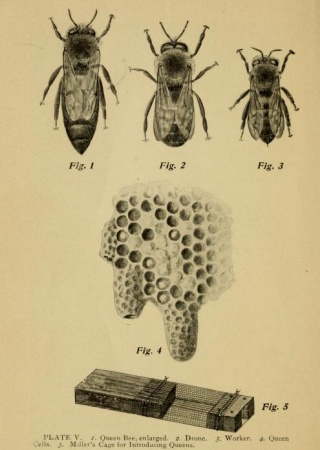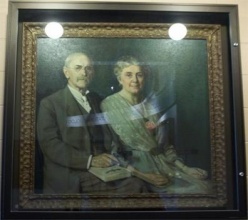Anna Botsford Comstock
- Harry and Anna supported one another throughout the duration of their marriage: he by investing $5,000 in her book, The Handbook of Nature Study, and she by caring for him after he had a stroke in 1926, which left him unable to speak or care for himself?
- Anna grew up around male cousins and said later in life, “Blessed is the girl who learns early in life that men are good”?
- The Comstocks could not have kids so they acted as surrogate parents to the students they taught at Cornell?
- Anna brought her Cornell students with her on field studies, and one student (Edwin Emerson) described her catching butterflies: “[Mrs. Comstock] kirtled up her skirt almost to her knees. . .At the first sunlit clearing Mrs. Comstock gave a cry of joy and seizing her net from me, darted after a lovely, black-and-white striped swallowtail. ‘It’s a zebra, a zebra,’ she cried, and presently managed to catch the butterfly, as it settled on a tall, waving flower”?
- In 1888-1889, Harry and Anna went to Germany and she was surprised and thrilled to see her own engravings of moths and butterflies in the Berlin Art Gallery?
- Anna was listed as “junior author” of Harry’s large and successful book, Manual for the Study of Insects(1895), because she not only engraved the illustrations but wrote many parts of the book?
- 1864 Anna is born.
- 1874 She attends Cornell University to study modern languages and literature; meets her future husband, John Henry (“Harry”) Comstock there, who is an entomologist.
- 1878 Anna and Harry marry; both work for the USDA in the capacity of entomologists.
- 1881 Anna stops teaching at Cornell; she re-enters as a student and receives a B.S. in entomology in 1885.
- 1888 Harry’s book, An Introduction to Entomology, is published, containing Anna’s unique wood engraving illustrations; this year Anna is honored as one of the first four women entered into Sigma Xi, a national science honor society.
- Late 1880’s Anna is elected to the American Society of Wood Engravers for her talent as a self-taught engraver.
- 1898 Anna becomes assistant professor of nature study at Cornell.
- 1903 She lectures in D.C. and is made trustee of Smith College.
- 1906 Anna publishes a novel,Confessions to a Heathen Idol, under a pseudonym; it is very successful and people discover she wrote it so she writes the sequel with her real name.
- 1911 She publishes both The Handbook of Nature Study (a bestseller) and The Spider Book.
- 1919 At age 65, Anna is made full professor at Cornell.
- 1923 Anna receives various honors, including being voted one of the 12 greatest women in America by the League of Women Voters.
- 1930 Anna receives an honorary Doctor of Humane Letters from Hobart College; this same year, Anna passes away from cancer.
Anna Botsford Comstock (1864-1930) was born to progressive, loving parents who taught her that girls could do whatever they chose. She attended high quality schools and was liberal in her religious beliefs. When she was three, her family moved to a farm. As she became a teenager, she was a prodigious reader and would educate herself on various topics. After attending high school, she went to Cornell University in 1874 to study modern languages and literature.
Anna met her future husband, John Henry (“Harry”) Comstock during his zoology course at Cornell. They became good friends and in 1878 got married. Harry had been made assistant professor of entomology at this point, and after their marriage he was appointed chief entomologist at the USDA. Anna also received a salary from the USDA to write entomological notes and answers to questions about agriculture.
Anna was illustrating insects for Harry since before their marriage and her detailed images helped him identify species. Anna eventually became a natural history illustrator based on the popular reception of her entomological drawings. She and Harry returned to teach at Cornell until 1881. Anna re-entered Cornell to study entomology and received a B.S. 1885. In her spare time she learned engraving to help illustrate her own, and Harry’s books. In 1898 she became assistant professor of nature study at Cornell and wrote many articles on botany and entomology. She also wrote entomology and zoology texts for both adults and children.




